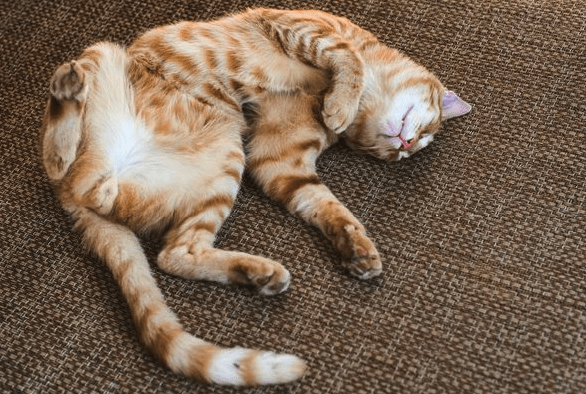Things to know about cat nap
Cats spend a good percentage of their lifespan by sleeping. Cats love a good nap time! If you are looking for an approximate figure that will tell you how much do cats sleep, then let me tell you that cats could sleep at around 16-18 hours per day! Based on these numbers, we could say that they spend more than half of a day sleeping!
Furthermore, cats enter REM state every 25 minutes, compared to humans with an approximate of every 90 minutes. That alone will tell you that your cat spends a lot of time sleeping – and dreaming!
The REM experience
Most of the cat dreaming happens during the REM sleep, or the Rapid Eye Movement Sleep. Humans also experience REM the same way as cats do. Therefore giving us more or less of an idea on how cats are probably feeling as they experience REM.
But of course, we do not limit the occurrence of the cat dreaming only during REM, but also even in non-REM sleep. Although, dreams that occur outside REM tend to be segmented and less vivid.
As for the case in kittens, they experience more dreams while they are young, thus more twitching occurs; but as they grow older, they lose this quality and so does the twitching – it subsides eventually.
Is it normal?
As we have earlier discussed, cats sleep in two ways: the light sleep and the deep sleep. A light cat sleep is when your cat stays alert and aware of its surroundings despite being asleep. A deep cat sleep is where most of the twitching happens – you will know that your cat is in this type of sleep if it suddenly moves its paws or whiskers, and it isn’t as easy to wake them up as in the light sleep.
With that said, cats twitching in their sleep is pretty normal! So no worries there! But how normal is normal? Well, let us further delve into the details and find out more about its various meanings.
What really happens then?
When we fall asleep, our body has a natural mechanism that protects us from harm as we retire to sleep. This mechanism is called muscle atonia, or in much simpler terms – our muscles are being immobilized for the meantime. Muscle atonia occurs during REM sleep, so how come our muscles still twitch? Well, it’s because this mechanism does not completely immobilize our body all the time.
This becomes a more scientific explanation as to why your cats twitch in their sleep. Very much like how us humans lose some muscle atonia during sleep, cats do so as well. Your cat is most probably having a great naptime, that’s why its paws or whiskers twitch every now and then!
When should you be alarmed?
While we have established that cat twitching is completely normal, that does not mean we’d become complacent and assume that everything will be alright all the time. There will be situations wherein the twitching should already be a cause for alarm and a prompt for a vet visit.
If your cat has certain medical conditions like epilepsy, you should watch your cat more closely when it twitches during its sleep. There are ways to know if your cat is in pain, just by looking at its reactions. Medical conditions such as epilepsy can cause your cat to have cat seizures during their sleep. In this portion, we will learn to distinguish between a seizure and sleep apnea.
Cat seiures
The very distinct characteristic of a cat seizure is its duration. It usually lasts 5 minutes or even longer. You will find your cat involuntary move or shake, sometimes there would be a lot of drool or even pooling of foam around its mouth. Many people have tried CBD oil from reputable brands like Somino CBD to help cats reduce their seizures.
Sleep Apnea
It looks very much like cat seizures. Again, timing is key. Observe how often and how long do your cats exhibit the symptoms.
